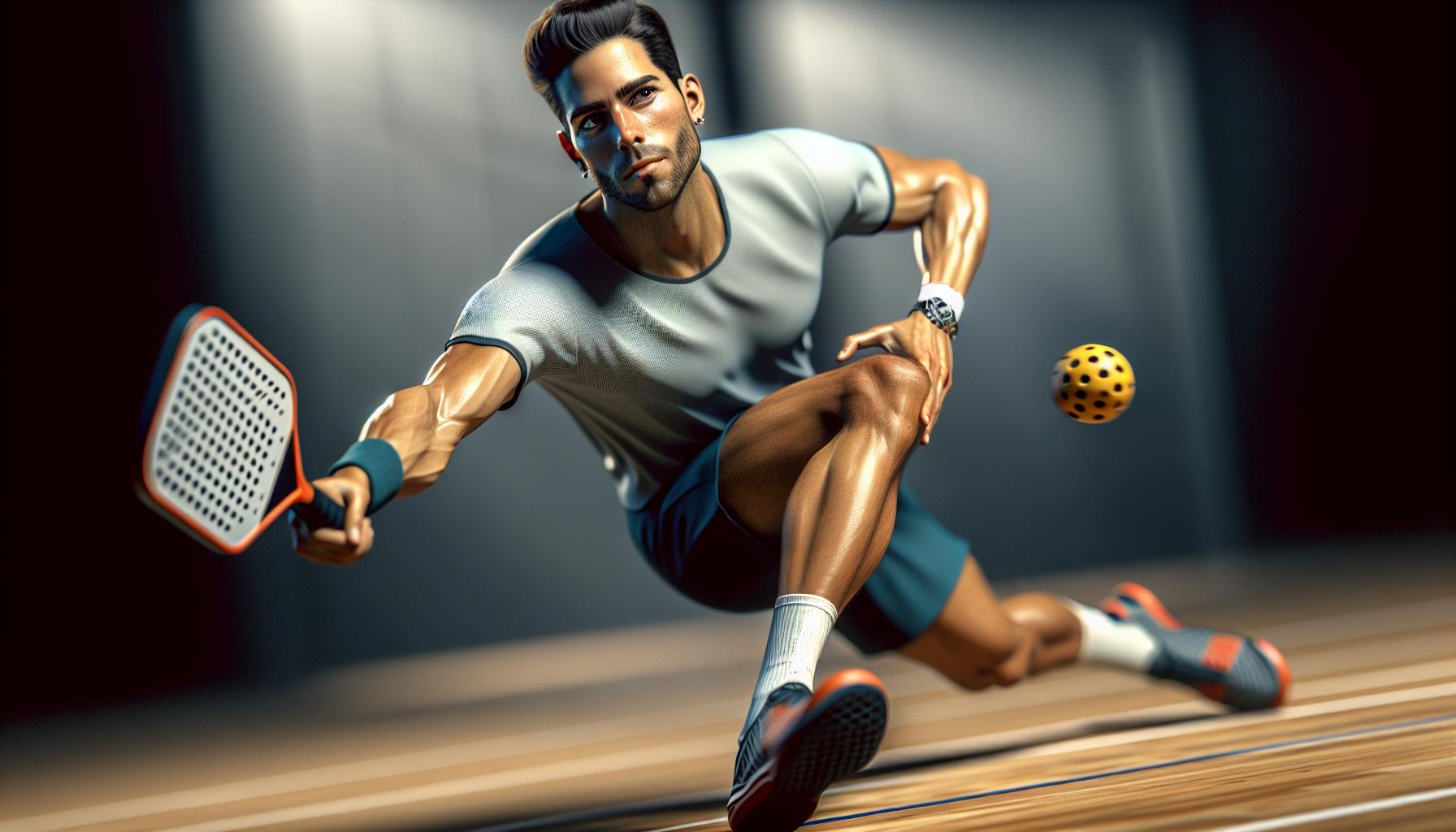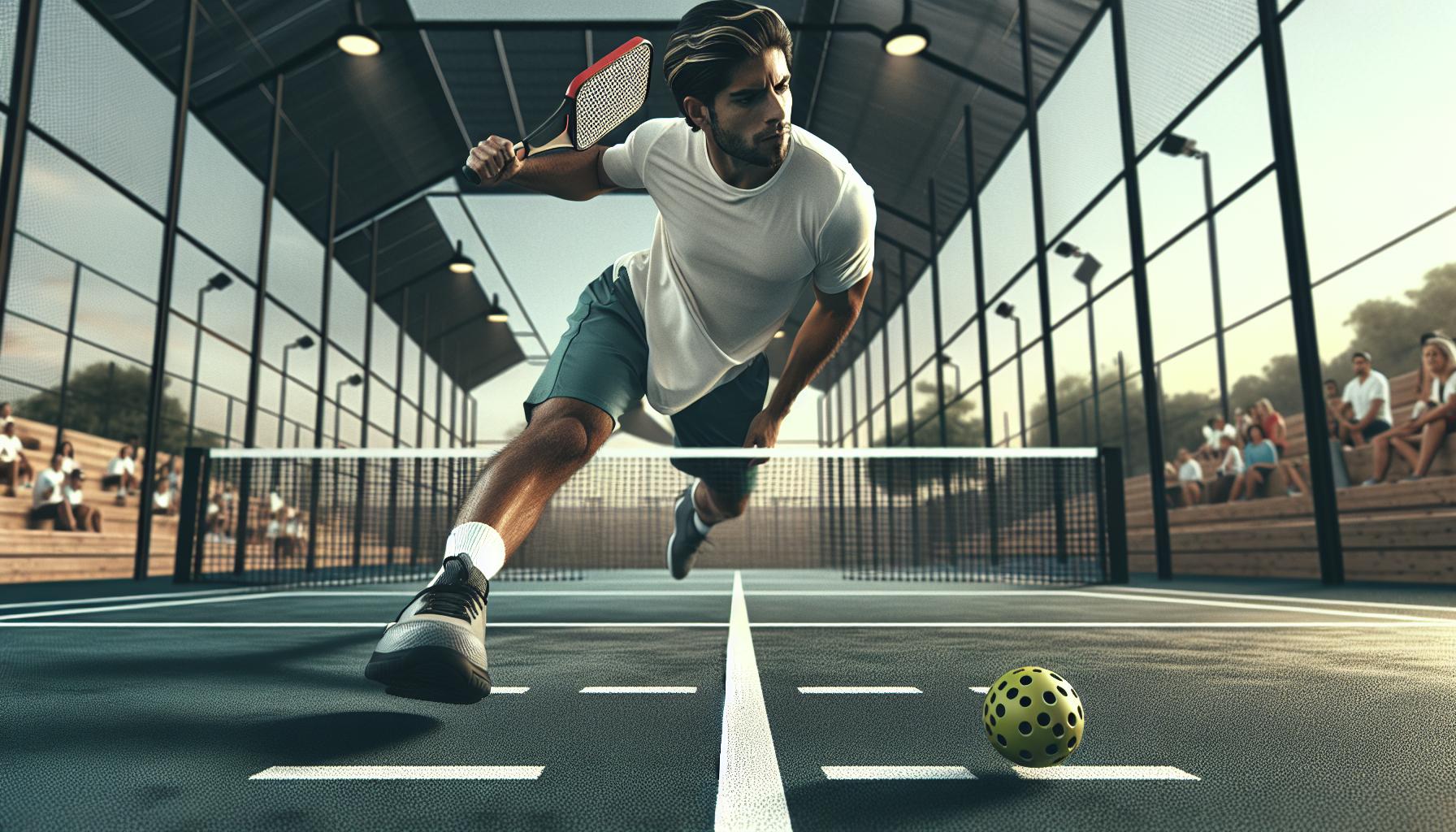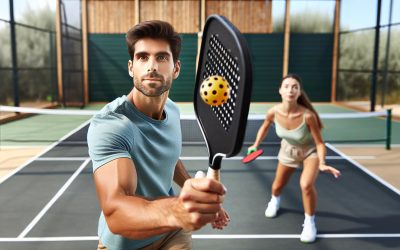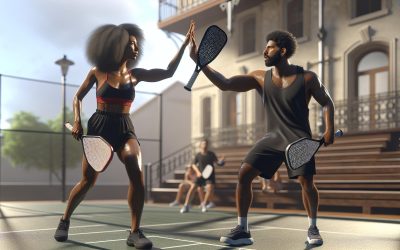Pickleball, a sport that’s taken the world by storm, isn’t just about having the fastest paddle or the strongest backhand. It’s also about mastering the art of serving. Advanced players know that a good serve can set the tone for the entire game, turning the tide in their favor from the get-go.
But what separates a good serve from a great one? It’s all in the technique and a sprinkle of strategic thinking. From mastering the spin to perfecting the placement, there’s a lot that goes into an advanced serve. Let’s dive into some tips and techniques that can elevate your pickleball game from good to unbeatable.
Importance of a Strong Serve
In the dynamic world of pickleball, a strong serve isn’t just the starting point of a rally—it’s a powerful tool that can shape the entire game. Players who master the art of serving not only gain an upper hand on the court, but they also instil a sense of pressure on their opponents right from the get-go. With the game evolving, the serve has transformed from a mere game initiator to a strategic element capable of swaying matches in favor of those who excel at it.
A well-executed serve has the potential to set the tone for the point. It can force the receiver into a defensive position, limiting their ability to return with a strategic shot. This advantage is crucial as it opens up opportunities for the server to anticipate and control the rally. Moreover, a serve that’s both strong and accurate can reduce the chances of the opponent executing a direct point-scoring return, essentially giving the server a head start in every rally.
The Psychological Edge
Beyond the physical benefits, a strong serve offers a significant psychological advantage. When opponents face a server known for powerful and unpredictable serves, it introduces a level of uncertainty and stress. This mental pressure can lead to errors, hesitations, and ultimately, a dip in performance from the opposing side.
It’s not just about the force behind the serve but also about the variety and unpredictability a player can introduce. Incorporating different serving techniques like the spin serve, the soft serve, or the power serve keeps the opponent guessing and disrupts their rhythm. This unpredictability can be a crucial factor in breaking the opponent’s focus and gaining psychological dominance.
Continuous Improvement Is Key
To maintain an edge over competitors, players must consistently refine their serving skills. This involves practicing a range of serves to ensure they’re prepared for any game scenario. Regularly working on the serve ensures that a player can confidently execute under pressure, adapt to different opponents, and make quick decisions on the best serving strategy for each point.
Engaging in drills that simulate match conditions can help players become more adaptable and responsive. This not only improves serving skills but also enhances overall game performance. Recognizing the importance of a strong serve in pickleball is just the first step. The journey to mastering the serve is ongoing, requiring dedication, strategic thinking, and a willingness to experiment with new techniques.
Mastering Spin on your Serve

When players move beyond the basics of pickleball, mastering spin on the serve becomes an essential skill for gaining a competitive edge. Spin serves in pickleball not only make the ball more difficult for opponents to predict and return but also add a layer of strategy that can set the pace of the game. While there are various types of spins, the two most impactful are the topspin and the backspin.
Topspin serves require players to brush up the back of the ball with an upward swing. This technique causes the ball to dip faster than usual, potentially leading to a difficult return. To perfect the topspin serve, players should focus on the following key areas:
- Angle of the Paddle: A slight tilt forward helps create the necessary spin.
- Point of Contact: Hitting the ball slightly in the front will enhance the forward momentum.
- Follow Through: A smooth follow-through directed towards the target area ensures the ball gets the desired spin and direction.
On the other hand, backspin serves involve hitting the bottom part of the ball in a downward motion. This spin makes the ball float unpredictably and can drastically slow down upon hitting the ground, complicating the return for the receiver. Key components for a successful backspin include:
- Paddle Angle: The paddle should be tilted slightly backward.
- Strike Zone: Hitting the ball closer to the top edge increases the efficiency of the spin.
- Swing Path: A swift, downward stroke adds the required backspin to the serve.
Incorporating spin into your serve isn’t just about making the ball harder to hit; it’s about adding an arsenal of options to your gameplay. Each serve, whether topspin or backspin, can be tailored to exploit the opponent’s weaknesses or to set up the next shot. Moreover, the ability to alternate between different spins adds an element of unpredictability, keeping opponents on their toes.
- Repetition: Practice each serve type extensively to develop muscle memory.
- Visualize Success: Before serving, visualize the trajectory and landing spot of the ball.
- Adjust for Conditions: Be mindful of wind and other environmental factors that might affect
Perfecting the Placement

Mastering the art of serve placement in pickleball is a game-changer. It’s not just about power; it’s about precision and strategy. Successful players know that where the ball lands can significantly impact the flow of the game. They aim to place their serves in a way that challenges their opponent, forcing them to move out of their comfort zone or setting up the server for a strategic advantage in the rally.
Placement serves fall into two main categories: deep serves and short serves. Each has its purpose and can be devastatingly effective when used correctly.
Deep Serves
Deep serves push the opponent towards the baseline, limiting their ability to advance and attack the net. This placement is especially valuable in keeping aggressive players at bay.
- Advantages: Keeps the receiver back, allows server to control the pace.
- Target Zones: Corners of the service box, near the baseline.
Practicing deep serves involves focusing on consistency and accuracy. Players often use targets during practice to improve their ability to hit specific areas of the court.
Short Serves
In contrast, short serves are designed to drop quickly over the net, forcing the opponent to rush forward. This can disrupt their rhythm and create opportunities for the server to exploit.
- Advantages: Forces the receiver to move quickly, disrupts timing.
- Target Zones: Just over the net, preferably close to the sidelines.
To execute a successful short serve, players must master a delicate touch, ensuring the ball clears the net but doesn’t provide the opponent with an easy return. This requires finesse and control, often achieved through repeated drills and practice sessions.
Incorporating both deep and short serves into a player’s repertoire makes them unpredictable and more challenging to defend against. Mixing up serve placements keeps opponents guessing and can lead to errors or poorly executed returns.
Practicing placement requires attention to detail. Players often use the following techniques to refine their serve placement:
- Visual Cueing: Imagining the trajectory and landing spot before the serve.
- Target Practice: Using cones or markers as targets during practice sessions.
- Repetition: Consistently practicing serves to build muscle memory and confidence.
Advanced Serving Techniques

As pickleball players move beyond the basics, mastering advanced serving techniques can significantly upgrade their game. Advanced serving not only involves power and spin but also strategic placement and variation. By diversifying their serve portfolio, players can keep their opponents guessing and on the defensive from the start.
Power Serve
A power serve, as the name suggests, focuses on delivering the ball with as much force as possible. The goal here is to limit the receiver’s reaction time, making it tougher for them to return a strategic shot. To execute a power serve, players should:
- Stand at the baseline with feet shoulder-width apart.
- Use a strong, firm grip on the paddle.
- Swing with a full range of motion, snapping the wrist upon impact for extra speed.
It’s crucial to practice aiming the power serve because, without control, the serve could easily go out of bounds or into the net.
Spin Serve
Adding spin to a serve complicates the return for the opponent. Topspin makes the ball dip faster than expected, while backspin (or slice) can cause it to skitter and stay low. For topspin:
- Tilt the paddle face slightly upwards.
- Hit the ball in an upward motion, brushing over the top of it.
For backspin:
- Tilt the paddle face downwards.
- Strike the ball in a downward motion, ensuring to brush underneath it.
Both serves require precise wrist movement and practice to master the amount of spin needed.
Soft Serve
A less commonly used but highly effective technique is the soft serve. The aim is to barely send the ball over the net with as little force as possible, making it drop quickly and forcing the receiver to rush forward. This serve is especially useful against players who prefer to hang back. To execute a soft serve, players should:
- Stand closer to the baseline to reduce power.
- Use a gentle grip and a controlled, minimal swing.
- Aim for the nearest part of the service box to decrease travel time.
This serve is all about precision and delicate touch, rather than power or spin.
- Alternate between power, spin, and soft serves.
- Vary the depth and angle of each serve.
- Keep
Tips for practicing your Serve
Mastering advanced pickleball serving techniques demands dedication and focused practice. Whether you’re honing your power serves, adding spin, or perfecting soft serves, each type requires its own set of strategies. Here are some invaluable tips to help elevate your serve game.
Consistency Is Key
To develop a reliable serve, consistency in practice cannot be overstated. It’s not merely about hitting hundreds of serves but doing so with intention. Set specific goals for each practice session, such as working on the depth of your power serves or the accuracy of your spin serves. Use targets on the court to improve precision and gradually increase the difficulty as you progress.
Vary Your Serve Types
Once comfortable with the basics of each serve, it’s crucial to diversify. Avoid becoming predictable by mixing up your serves. Alternating between power, spin, and soft serves during a match can keep your opponent guessing and off-balance. Remember, unpredictability is a formidable weapon in pickleball.
Focus on Your Form
Proper form is the foundation of any effective serve. Pay close attention to your body’s mechanics—foot placement, hip rotation, arm swing, and paddle grip—all contribute to the power and control of your serve. Recording your serve can provide invaluable insights, allowing you to analyze and adjust your technique.
Use Drills to Enhance Skills
Incorporate drills that focus specifically on serving. For example, a drill might involve serving to different sections of the court to practice accuracy or adjusting the serve’s speed without losing control. Here are a few drills to get started:
- Target Practice: Place cones or targets in various locations on the serve box to work on precision.
- Serve Under Pressure: Practice serving after physical exertion, mimicking the tiredness experienced during a match.
- Spin Control: Use different spin techniques and aim to land the ball in specific court zones.
Mental Preparation
Mental preparation plays a significant role in serving success. Visualize successful serves before executing them and stay positive, especially after a fault. Treat each serve as an opportunity to start the point with an advantage. Strategies like deep breathing or having a serve routine can help maintain focus and calmness.
Conclusion
Mastering the art of serving in pickleball isn’t just about the physical act—it’s a blend of technique, strategy, and mental preparation. By incorporating power, spin, and soft serves into your game, you’re not just keeping your opponent guessing; you’re taking control of the point from the very start. Remember, practice doesn’t just make perfect; it makes permanent. So, dedicate time to refining your serves, focusing on consistency, and experimenting with different depths and angles. And let’s not forget the mental game. Staying focused and confident while serving can often be the key to tipping the scales in your favor. With these tips and techniques in your arsenal, you’re well on your way to becoming a more formidable player on the court.














0 Comments